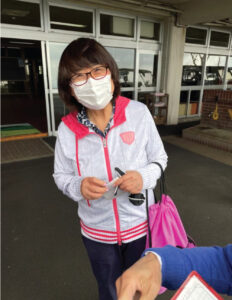Traveling after a long hiatus Yuko Imai, Regional Managing Partner, AirlinePros Japan, found the increasing absence of people at various contact points in airports both interesting and intriguing. It led her to think aloud about people-free technologies – already there and on the way.

During my three-year break from international trips – enforced, of course, by the pandemic – the world changed an amazing lot. Especially in terms of the need for physical human contact – a change felt more profound in air transport. This sector is on its way to operate with a negligible number of people – and I am talking not just about internet check-ins but the overall experience at airports. Leading technology players in aviation have been developing contactless check-in, baggage drop, security and boarding – all accomplished with the mobile phone – and many of them have indeed found their way too into our traveling lives. Here is the gist of my experience with some touchless technologies across airports as I flew from Tokyo to Bangkok to attend AirlinePros’ regional meeting, the Asia Pacific chapter, in November this year.
Departure from Tokyo
Swiped my boarding pass QR code (at one point in time used to be done by staff members) and the gate opened. I walked to the security gate – where the trays are conveyed automatically. Again, these were once carried by airport staff but now rolls toward you under the table. Then we went to the security screening and did the Mickey Mouse pose as before (slightly relieved as some things remain unchanged).
There were fewer booths with staff than what I remember. A systematic, seamless process with automatic gates, no winding long queues. Face recognitions and fingerprints that opened gates. Biometric technology, which many refer to as the future of air travel, was in its full glory here.

Arrival and departure (Bangkok)
Must admit I was pleasantly surprised when I heard the flight attendants say that there was no need for entry documents – only facial recognition and fingerprints were needed. Biometric magic at work, again. The departure area was quite congested, I must say. Standing tall and collected in the midst of all the milling people was Sahassadeja, the guardian warrior. Unlike most others around me, he was wearing a mask which made me wonder why gods needed to wear a mask like us mortals. Okay, I was wearing one.
Arrival in Tokyo

Probably had I read the guidelines closely in the ‘Visit Japan’ website, I might have had it easier upon my return. I was totally and unprofessionally wrong in taking the quarantine rules too lightly. The good thing is that international travelers were all ready with the regulations which they accessed through their mobile phones. So, when I landed, the ground staff asked to open the ‘Visit Japan’ website to get the QR code which was needed to clear the process. I apologized profusely, guess my visible embarrassment was proof enough that it was sheer ignorance. Took me over half an hour to complete it – quite a turmoil for your Aunty Yuko, right?
I counted some 30 officers – finally for some people like in the good old days! – and two or three checkpoints for the quarantine formalities. Thankfully with the QR code and the vaccination records, I cleared the line in no time. For Japanese citizens, face and passport verifications were good enough, however international passengers had to fill out forms and go to the booths where they were taken through the formalities by the staff.
These are just the tip of the iceberg technologies, as we all know. Even though it might take some time, going by the pace of developments you can say motion and sensor-based technologies too are going to play a big role in minimizing contact. And many other technologies that begin the passenger journey even before they reach the airport.
Yes, there is a lot to look forward to – both in technology and travels!
